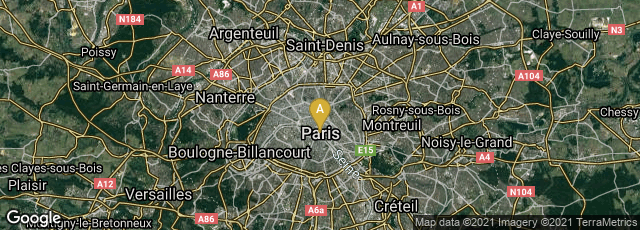

A: Paris, Île-de-France, France
In 1782 French mathematician and director of fortifications Charles Louis de Fourcroy published his "Table poléométrique" in Essai d'une table poléométrique, ou amusement d'un amateur de plans sur les grandeurs de quelques villes by M. Dupain-Triel père, Géographe du Roi.
Fourcroy's Tableau poléométrique published in this work was
"one of the oldest proportional representations of human phenomena."
"Each city is reperesented by a square whose area is proportional to the geographic area occupied by the city (and for the smallest cities, by a half square only, divided by the diagonal line.
"When superimposed, the squares are classed automatically. This results in visual groupings, which lead the author to propose an 'urban classification' "(Bertin, Semiology of Graphics [2011] 202-03, with reproduction).
In Dupain-Triel's 45-page work Fourcroy pioneered the use of graphs in cross-sectional and mathematical analysis. In January 2013 a color reproduction of his graph was available at this link.